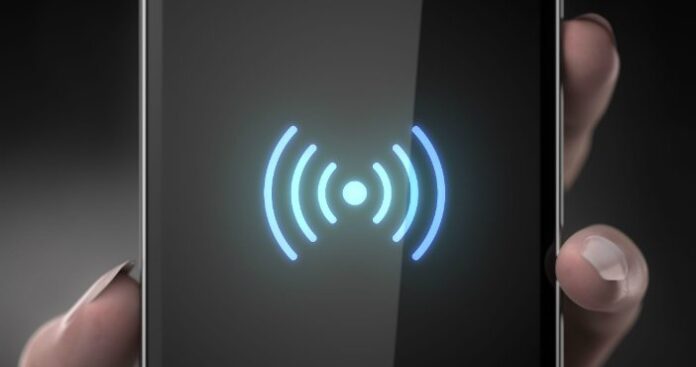Wireless Broadband Alliance CEO Tiago Rodrigues: ‘Wi-Fi 6E will rewrite the rules of what is possible’
In April 2020, the United States Federal Communications Commission (FCC) made 1,200 megahertz of spectrum available in the 6 GHz band for unlicensed Wi-Fi use, a capability referred to as Wi-Fi 6E. Many called the decision monumental and historic. At the time, Wireless Broadband Alliance (WBA) CEO Tiago Rodrigues said that “Wi-Fi 6E will rewrite the rules of what is possible” and that it will lead to “higher speeds, low latency and service levels that are equivalent to 5G networks.”
Wi-Fi 6E promises to deliver faster connectivity speeds and improved capacity when compared to both 2.4 GHz and 5 GHz Wi-Fi, making it ideal for smartphones, tablets, laptops and, perhaps most exciting, virtual/augmented devices. Further, the multi-user-MIMO (MU-MIMO) capabilities of 802.11ax, or Wi-Fi 6, combined with 6 GHz spectrum band will create a number of use cases both in the home and in the enterprise space.
When it comes to the home environment, CommScope’s CTO of Home Networks Charles Cheevers sees a huge opportunity for Wi-Fi 6E.
The problem with Wi-Fi 6 in the home, Cheevers explained, is that, at least for now, it has to share the network with several devices that are Wi-Fi 4 or 5.
“You get none of the benefits of Wi-Fi 6 from the scheduling perspective when you buy your first Wi-Fi 6 AP,” he commented. “What you do get is 15-35% general improvement, but not the 4 times improvement that is possible.
“But with Wi-Fi 6 in the 6 GHz band, you are getting almost ethernet-like in quality — reliable transmission from one place to another,” he said, adding that this has significant implications for gamers, who are often tethered to the wall via an ethernet to ensure the best playing experience.
This, in addition to increased determinism, will finally make consumer applications like AR and VR “work properly,” according to Cheevers.
“When you can now do deterministic packet transmission and arrival, things like AR and VR now become possible on Wi-Fi,” he claimed.
Technology manufacturers were particularly excited about Wi-Fi 6E, with chipmakers like Broadcom and Qualcomm quick to develop 6E chips months before the new technology was certified. In fact, in a conversation with RCR Wireless News in May 2020, Qualcomm’s Senior VP and GM of Connectivity Rahul Patel said the company is “very excited about Wi-Fi 6E. For us and our customers, we all are very enthusiastic and eager to launch [compatible devices]as quickly as possible.”
In addition, Patel claimed that, at the time, Qualcomm already had more than 70 Wi-Fi 6-enabled devices and an additional 200 or so access point and gateway designs.
Then, in December 2020, the FCC certified the first Wi-Fi 6E device, a low-power indoor transmitter from Broadcom, authorized by the FCC’s Office of Engineering and Technology. In response to the news, FCC Chairman Ajit Pai issued a statement, calling the authorization “an exciting glimpse of America’s Wi-Fi future.”
“It’s a spectrum update, not just a technology update,” Extreme Networks’ Director of Wireless Networking at the Office of the CTO David Coleman recently told RCR Wireless News, adding that 6 GHz operation will “carry Wi-Fi” into new areas.
“I think starting this year and into 2022, in the enterprise space, people are going to take a bigger notice [of Wi-Fi] and be more eager to update their networks […] simply because they’re going to have this new, clean spectrum that was not previously available,” he continued.
Adam Smith, director of product marketing at LitePoint, agreed, commenting that use of the 6 GHz spectrum, on which only Wi-Fi 6 clients can operate, is necessary for a real “game-change move” in how Wi-Fi is used. This is because without legacy clients bogging down the newly released spectrum, the network experiences a significant improvement in density, reliability and throughput.
“Once you’re in the 6 GHz band, you’re going to be a multi-user, OFDMA-compliant device rather than the ol’ wait-in-line device,” he explained. “Even if Wi-Fi 6 was being adopted in a major way, it’s still just existing with these legacy clients, and it’s hard to move into the multi-user mode of Wi-Fi 6 until you get out of [the legacy] spectrum. Spectrum is a huge piece for Wi-Fi to really take the next leap.”
According to the Wi-Fi Alliance, more than 41 countries worldwide have already designated 6 GHz for unlicensed use, while many more are actively working to open up the band.
Countries enabling or considering more spectrumWi-Fi 6E
| – Argentina Considering (5925-6425 MHz) – Australia Considering (5925-7125 MHz) – Brazil Adopted (5925-7125 MHz) – CEPT Considering (5945-6425 MHz) – Canada Adopted 5925-7125 MHz – Chile Adopted 5925-7125 MHz – Colombia Considering 5925-7125 MHz – Costa Rica Adopted 5925-7125 MHz – Egypt Considering 5925-6425 MHz – European Union Adopted (5925-6425 MHz) – Guatemala Adopted (5925-7125 MHz) – Honduras Adopted (5925-7125 MHz) – Japan Considering (5925-7125 MHz) – Jordan Considering (5925-7125 MHz) – Kenya Considering (5925-7125 MHz) – Malaysia Considering (5925-7125 MHz) – Mexico Considering (5925-7125 MHz) – Morocco Adopted (5925-6425 MHz) – New Zealand Considering (5925-6425 MHz) – Norway Adopted (5925-6425 MHz) – Oman Considering (5925-6425 MHz) – Peru Adopted (5925-7125 MHz) – Qatar Considering (5925-7125 MHz) – Saudi Arabia Adopted (5925-7125 MHz) – South Korea Adopted (5925-7125 MHz) – Tunisia Considering (5925-6425 MHz) – Turkey Considering (5925-6425 MHz) – United Arab Emirates Adopted (5925-6425 MHz) – United Kingdom Adopted (5925-6425 MHz) – United States Adopted (5925-7125 MHz) |

